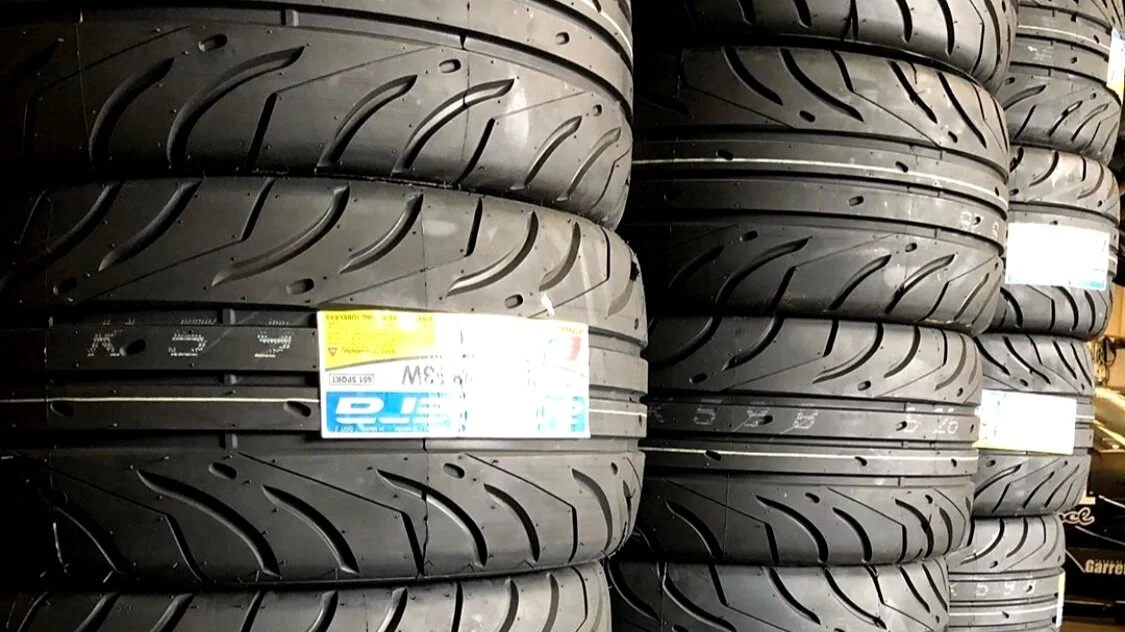How to Shop for Tires.
The process for shopping for tires, like shopping for anything, is evolving. Sure, you can always head down to your local tire shop and they will recommend a tire for you, mount it, and you’ll be on your way. While this is the most conventional option, newer options are now available that ensure you can make the best decision for you and your car.
As online shopping continues to grow, our options become limitless. This is great, but with all the options can come information overload. So, how do you comb through that information and decide what’s best for you? That’s where we come in.
To dive in, let’s start with what’s universally important.
Price
Tire price, for many, is the first and last thing people consider when buying tires. While it is incredibly important to establish a budget and sticking with it, there are more things to consider. When deciding on a budget for your new set of tires, it's a good idea to know what features are important to you and what you can live without.
The price of tires can be set based on several factors: brand recognition, performance, life longevity, warranty, composition and design to name a few.
When purchasing a set of tires, it's important to decide what factors are important to you and weighing them against the price and value of the tire. The good news is, with the growing popularity of online shopping, this information is at your fingertips. It has never been easier to find the best deal for the best tire for your car.
Tire Size
One of the ultimate limiting factors when purchasing your tire is knowing your tire size and understanding what it means. To quickly break it down the first three-digit number you see will indicate the width of the tire, the second number will indicate the height of the tire’s sidewall, and the third will indicate the wheel’s diameter that the tire can be mounted to. This will ultimately help you narrow to a few specific tires that will work for your car or truck.
Tire Category
Tire category indicates whether the tire was engineered for a passenger car or a light truck (not an 18-wheeler). Most of the time, this will be indicated by a P or a LT after the tire size on the sidewall. The reason this is important is because it will showcase whether the tire is designed for comfort and high-speed performance, or for heavier weights, stability, and durability. Sometimes the category won't be marked on the sidewall, but if you have any doubts you can always ask the tire retailer you are shopping with.
Composition and Design
Many tires are designed to specifically cater to the needs of the driver. Most drivers are looking for great tires that will help them get from point A to point B safely, and comfortably. However, some drivers are looking for high-performance tires that will sacrifice some comfort and longevity for grip and control. For instance, you may see some tires labeled as an Ultra-High Performance (UHP) or Race (R)-Compound tires. These tires are specifically designed for high-speed performance that can be used on a track, or spirited driving on the street.
Some LT tires will be labeled as a Mudd-Terrain (MT), Highway-Terrain (HT), or All-Terrain (AT). These will indicate that the tires where designed to be driven primarily off-road, on-road, or a combination of the two.
No matter what kind of tire you are looking for, it is important to understand the tires composition and design to appropriately pick out the right for how you drive.
The Warranty
Almost every tire manufacturer has a tire warranty, however not all tire warranties are created equal. When selecting a tire, you should read the warranty with a fine-tooth comb to know what you get with your purchase.
Most warranties cover manufacturer defects up to a certain mileage, the average is 30,000 miles but some go up to 80,000 miles plus. There are some that also include road-side hazards. These are the ones to look at for, it’s always good to have your bases covered, especially with an investment as important tires. The last thing you need, is an unexpected blowout to set you back a few hundred.
A lot of manufacturers also include a uniformity warranty which basically states that if a tire isn’t the same as the rest of the set, they will replace it. However, it is worth noting that tire manufacturers have a very strict quality control process, and most of the time will only replace one tire out of the set due to the belief that errors are very few and far between.
Some retailers, like Tire Streets, offer a 30-day money back satisfaction guarantee. This offers people the ability to drive on the tires for up to 30 days, and if they aren’t satisfied, they simply return them for a refund.
As mentioned above, warranties vary from manufacturer to manufacturer, retailer to retailer. It’s up to you to decide which warranties most align with you concerns and needs. Most tire manufacturers list their warranties in detail on their websites.
The Final Word.
This article isn’t designed to be a one-stop knowledge dump for you to figure out what tire is right for you, but rather a jumping off point to have a better understanding what you need to be looking for when comparing options.
Summing it up, there are many considerations to make when purchasing tires. It’s not a cheap purchase, and it is one that can ultimately impact your safety and performance on and off the road. With this knowledge, you can take the power back from the retailers and make the best decisions for your car.


